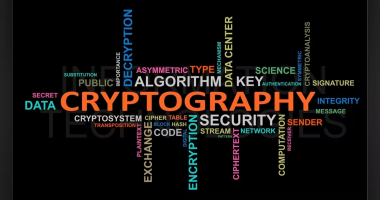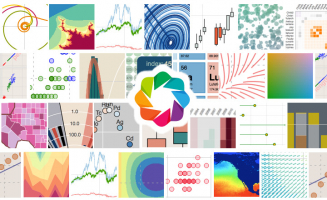Top 10 Best Online Modeling Courses
Modeling is about building representations of things in the ‘real world’ and allowing ideas to be investigated; it is central to all activities in the process ... read more...for building or creating an artefact of some form or other. If you’re curious about or pursuing a career in modeling, here are the best online modeling courses that are currently accessible to get you started.
-
It's a process that can take hundreds of hours to complete. As a result, this training will be current. It'll take a long time to complete. The instructor will include the completed stages in the training during this process. The tutorial will start with modeling and end under rendering.
You are embarking on a long-term adventure during this training. The instructor will show you how to model all of the cars in the world and at what stages you can build a car for yourself in this adventure. Models with and without a car will be created. All of the textures and materials will be prepared by you. After that, you'll select the best lighting conditions as well as the best camera angles and settings.
By the end of the course, you will have modelled and rendered all of the world's automobiles. You will have gained a valuable skill if you complete the training from beginning to end. By looking at the lesson, you should be able to follow every detail. Throughout the training, there is no sound. Simply follow me and keep moving forward. Remember to ask questions if you get stuck. Before you begin the training, please keep in mind that it is a quiet environment, and if you get stuck, you will ask me a question.
It's a process that can take hundreds of hours to complete. As a result, this training will be current. It'll take a long time to complete. The instructor will include the completed stages in the training during this process. The tutorial will start with modeling and end under rendering.
Who this course is for:
- Wants to model cars.
- Who wants to create a car scene.
- Those who want to create a car project with Cinema 4D and V-Ray.
Requirements
- The desire to learn.
- Loving cars.
- Basic Cinema 4D and V-Ray knowledge.
Course ratings: 5.0/5
Enroll here: https://www.udemy.com/course/vehicle-modeling-orhanyucesoy/

autodesk.com 
news.mit.edu -
Modeling acoustic guitars is always fun, and it presents many great hard surface modeling challenges and opportunities to learn, whether you're new to 3D or just looking for a fun project in Blender.
From start to finish, this course will walk you through the entire creation process. Starting with setting up background images to use as references, you'll learn the entire workflow for creating a detailed 3D model. Then, using smart workflows to achieve good topology and perfect shapes, you'll build each part of the model one by one. You'll also learn how to use a variety of Blender "modifiers" to speed up your workflow and make modeling more efficient and effective.
Because the instructor will be talking to you as he walks you through each step and explaining why he does it, the narration for these videos will be in real time. There's a hotkey display at the bottom of the videos, and he says the hotkeys as he uses them, so you'll always know what he's doing as he walks you through the steps.
A Q&A section is located beneath each lecture in case you have any questions about the course or simply want to share your progress.
Who this course is for:
- Aspiring artists looking for a fun project to learn 3d or to take their 3D skills further
Requirements
- Basic knowledge of Blender 2.9 is recommended
Course ratings: 4.8/5
Enroll here: https://www.udemy.com/course/3d-modeling-in-blender/
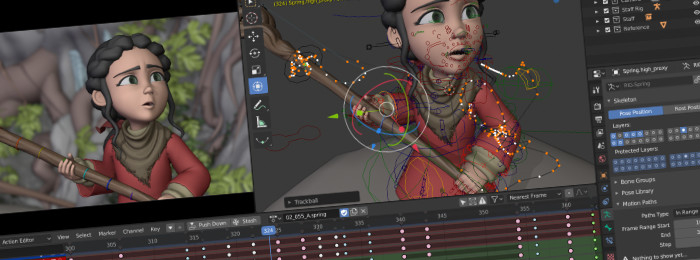
docs.blender.org 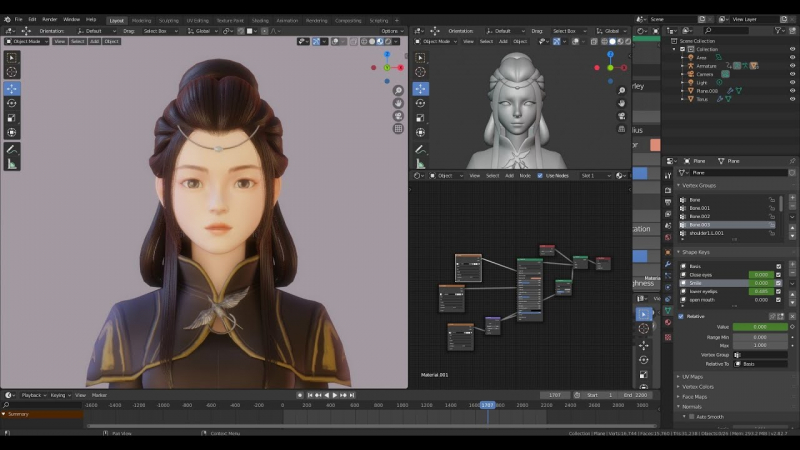
youtube.com -
Learn Blender 3D Modeling for Unity Video Game Development is aimed at anyone new to video game development (especially Unity game developers) who wants to learn 3D modeling, texture mapping, and simple animations with Blender from the ground up or simply expand their Blender capabilities to include 3D modeling. In other words, no prior modeling experience is required for this fantastic video course.
You will learn to create or edit props, design levels, apply material, and create simple animations for your games using Blender in this very clear and well organized course, and you will be able to Blend like a pro with a good working knowledge of all the most common tools for creating game props, building awesome levels, or tweaking your existing Unity Assets in this very clear and well organized course. Please keep in mind that this is not a Blender engine programming or game design course.
The entire course is broken down into six chapters and 72 sections that cover everything from the fundamentals to advanced topics. It includes a comprehensive introduction to animating without the use of bones or rigging, applying materials quickly with seamless textures, fine-tuning your final product with ambient occlusion texture maps, and more. You'll also learn how to UV Unwrap 3D objects, apply your own graphics, and more. This is definitely one of the best online modeling courses.
Who this course is for:
- This course is intended for video game developers who want to learn Blender for 3D modeling, texture mapping and simple animations. The course is directed towards Unity game developers specifically, but a student could learn what they need from this course for any video game development platform.
Requirements
- Students must have some working knowledge of video game development using Unity.
- Student has a respectable background in personal computing.
- Student has a drive to want to learn quickly.
- The course is taught on a PC/Windows computer, and requires the use of a standard keyboard with numeric keypad, a 3-button mouse with mousewheel and some knowledge of working with game development props, animations, scripts, and graphics.
- Students need to exercise some common sense.. for example; download and install Blender without a guide, and without being asked to do so. (The instructor assumes if you can develop video games, you can figure these things out on your own)
- Students should expect to watch one lecture at a time and then follow the lecture with a session in Blender.
Course ratings: 4.8/5
Enroll here: https://www.udemy.com/course/learn-blender-3d-modeling-for-unity-video-game-development/
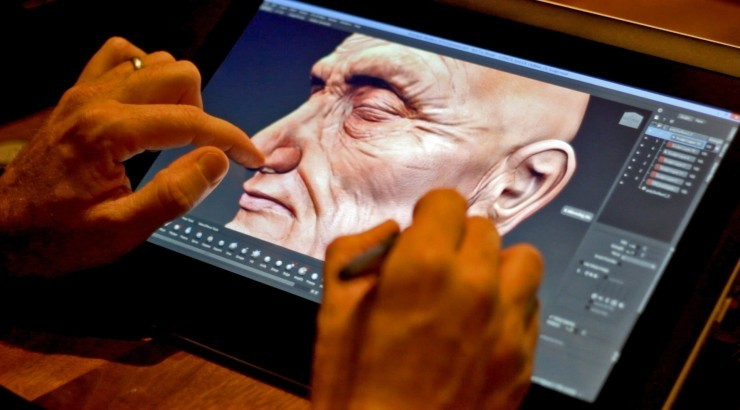
edcast.org 
digitalartsonline.co.uk -
Blender is an excellent platform for creating AAA-quality models that can be exported to any game engine, 3D printer, or other piece of software. Hundreds of thousands of students have taken this Blender course, and it is consistently ranked the #1 Blender course on Udemy in terms of rating and popularity.
Because the course is project-based, you'll be able to put your new skills to use right away on real 3D models. You'll have access to all of the project files, as well as additional references and resources, so you'll never be stuck. There are talking-head videos, diagrams, and screencasts, among other things.
If you're a complete beginner, the course will teach you all the modelling fundamentals you'll need. If you're an artist, it will teach you to bring your assets to life. If you're a coder, it teach you modelling and design principles.
For a one-time fee, you'll get full lifetime access. Because the creators are qualified and experienced in modeling and coding, they are able to clearly explain complex concepts while also entertaining the audience. You'll feel very confident in the fundamentals of 3D modeling and rendering by the end of the course, and eager to learn more.
Who this course is for:
- Competent and confident with using a computer.
- Artists who want to learn to bring their assets alive.
- Game Developers who wish to expand their Skill Set.
- Complete beginners who are willing to work hard.
Requirements
- Mac or PC capable of Running Blender Version 2.8 or above
Course ratings: 4.6/5
Enroll here: https://www.udemy.com/course/blendertutorial/
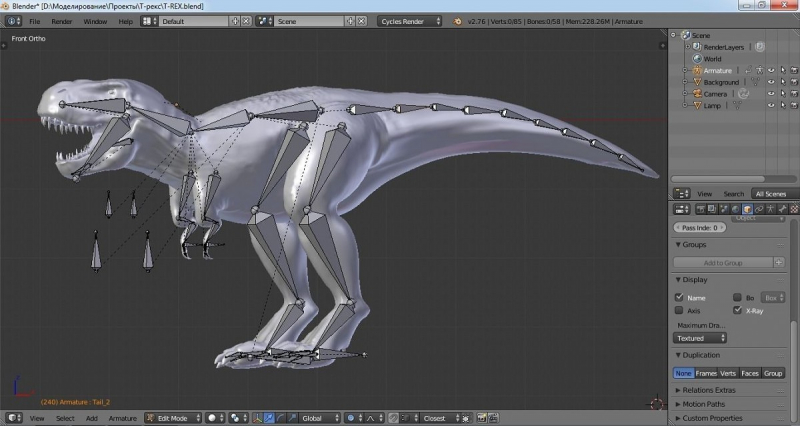
xda-developers.com 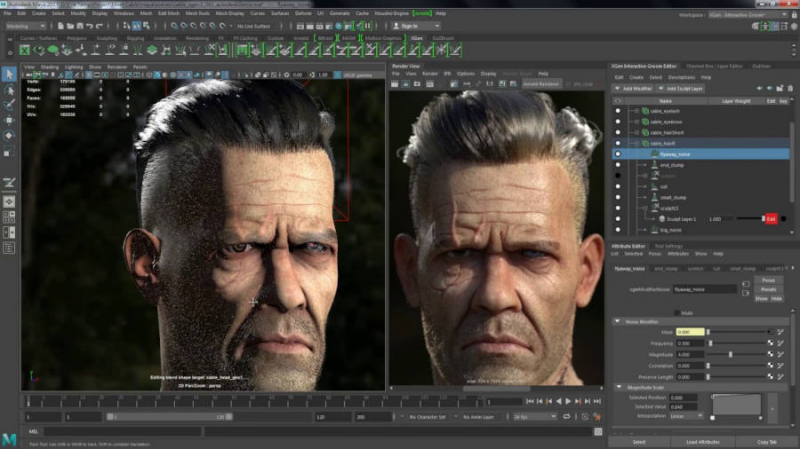
blender.org -
This course, one of the best online modeling courses, is for you if you are a current or aspiring IT professional looking for sound, practical techniques to analyze and model data as part of the overall data management lifecycle.
Throughout the course, you'll apply what you've learned by defining sample data model segments in both "classic" entity-relationship notation and "crow's foot" notation to highlight the best practices and techniques covered. Each section contains either scenario-based quiz questions or hands-on assignments that emphasize the material's key learning objectives. As a result, you can be confident that you're learning the most important aspects of data modeling as you progress through the course.
To build this course, the instructor drew from more than 30 years of his own work involving data modeling and related disciplines. Long ago, in the late 1980s, he was a software engineer at what was then the world’s second largest computer systems vendor, Digital Equipment Corporation. He wrote software for a “conceptual and logical database design tool” - in other words, a data modeling tool.
In this course, he'll take you through the fundamentals and concepts of data modeling, as well as a variety of best practices and techniques that you'll need to build data models in your organization. There are numerous examples throughout the course that clearly demonstrate the key concepts and techniques covered. By the end of the course, you'll be ready to not only put these principles into practice, but also to make the key data modeling and design decisions that the "art" of data modeling necessitates, decisions that go beyond the nuts-and-bolts techniques and design patterns.
Who this course is for:
- A business analyst, data engineer, or database designer, currently with little or no exposure to or experience with data modeling, who desires to build a personal toolbox of data modeling best practices and techniques.
- After completing this course, you will be ready to begin working on real-world data modeling projects, either with expanded responsibilities as part of an existing role or to find a new position involving data modeling.
Requirements
- Students only need a basic understanding of data management concepts and constructs such as relational database tables and how different pieces of data logically relate to one another. The course content builds on these rudimentary ideas; no other prerequisites are needed.
Course ratings: 4.5/5
Enroll here: https://www.udemy.com/course/mastering-data-modeling-fundamentals/

jhlearning.com 
mycustomer.com -
This course, one of the best online modeling courses, will give you a solid foundation by teaching you the most popular forecasting models and how to implement them for effective demand forecasting and devising forecasting analytics techniques. If you are a business manager or executive, or a student who wants to learn and apply forecasting analytics and forecasting models in real-world business problems, this course will give you a solid foundation by teaching you the most popular forecasting models and how to implement them for effective demand forecasting and devising forecasting analytics techniques.
The primary goal of each section is to teach you how-to examples on forecasting analytics, demand forecasting, and forecasting models.
Each section contains four elements: theoretical concepts and use cases for various forecasting models and forecasting analytics techniques, step-by-step instructions on how to implement forecasting models and forecasting analytics techniques in Excel for demand forecasting, a downloadable Excel file containing data and solutions used in each lecture on forecasting models and forecasting analytics, and class notes and assignments to revise and practice the concepts on demand forecasting.
Who this course is for:
- Anyone curious to master Forecasting Models from beginner to advanced
Requirements
- You will need a PC with any version of Excel installed in it
- Basic understanding of Excel operations like opening, closing and saving a file
Course ratings: 4.5/5
Enroll here: https://www.udemy.com/course/marketing-analytics-forecasting-models-with-excel/
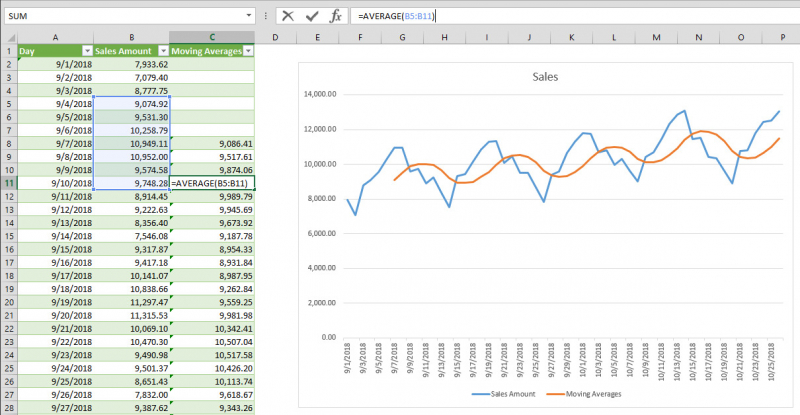
spreadsheetweb.com 
ardent-learner.com -
Making your models accessible to other systems within your organization or on the web so they can receive data and provide predictions is known as "deploying machine learning models" or "putting models into production." You can start to fully utilize the model you created by deploying machine learning models.
The course will walk you through every step of creating a model in a research environment, turning Jupyter notebooks into production code, packaging the code and deploying to an API, and adding continuous integration and continuous delivery. The course will do this by walking you through it step-by-step through engaging video tutorials. You will discuss the concept of reproducibility, why it matters, and how to maximize reproducibility during deployment, through versioning, code repositories and the use of docker. And you will also discuss the tools and platforms available to deploy machine learning models.
By the end of the course, you will have a thorough understanding of the machine learning model's research, development, and deployment lifecycles, as well as the best coding practices and factors to take into account when putting a model into use. Additionally, you'll be better equipped to use the tools at your disposal to deploy your models in any way that meets the needs of your company because you'll have a better understanding of them.
Who this course is for:
- Data scientists who want to deploy their first machine learning model
- Data scientists who want to learn best practices model deployment
- Software developers who want to transition into machine learning
Requirements
- A Python installation
- A Git installation
- Confidence in Python programming, including familiarity with Numpy, Pandas and Scikit-learn
- Familiarity with the use of IDEs, like Pycharm, Sublime, Spyder or similar
- Familiarity with writing Python scripts and running them from the command line interface
- Knowledge of basic git commands, including clone, fork, branch creation and branch checkout
- Knowledge of basic git commands, including git status, git add, git commit, git pull, git push
- Knowledge of basic CLI commands, including navigating folders and using Git and Python from the CLI
- Knowledge of Linear Regression and model evaluation metrics like the MSE and R2
Course ratings: 4.5/5
Enroll here: https://www.udemy.com/course/deployment-of-machine-learning-models/

freecodecamp.org 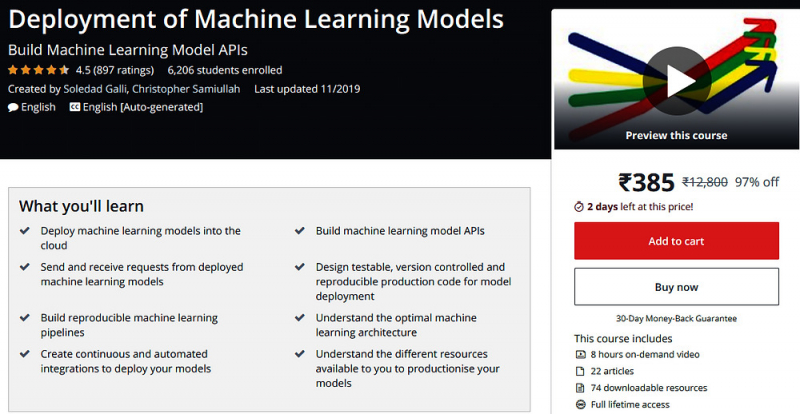
udemy.com -
This is an exclusively tailored course that is build-up from accumulated experience in car parking fire dynamics simulation and intended to be an advanced level course on smoke ventilation modelling including quickly build model geometry, faster than traditional ways, full understanding of parking ventilation using jet fans, advanced jet fans modeling on Pyrosim, and much more.
This course is the ultimate guide, and it was created with the sole purpose of turning amateurs into experts and giving experts who already use the software even more experience.
This course will teach you how to use jet fans for ventilation, as well as how to simulate car parking fires and understand the real-life safety requirements that are supposed to be verified from the simulation. In addition, this course contains insider secrets learned from successful modeling of many car parking simulations and even more on other fire applications using Pyrosim; these secrets are life-changing when it comes to modeling complicated models and large spaces in general.
Last but not least,the course will explain each step of the course using real-life examples to help you retain your knowledge, and it will provide all necessary resources and additional feedback at any time.
Who this course is for:
- CFD simulation Engineer
- Fire dynamics simulation Engineer
- Life safety engineers
- Fan suppliers & manufacturers
- Mechanical engineers
- Fire protection engineers
Requirements
- Basic understanding of Pyrosim & fire dynamics simulation is preferred (otherwise it is suggested to refer to the course on mastering FDS simulation using Pyrosim)
Course ratings: 4.5/5
Enroll here: https://www.udemy.com/course/advanced-pyrosim-modelling-of-jet-fans-parking-fires/
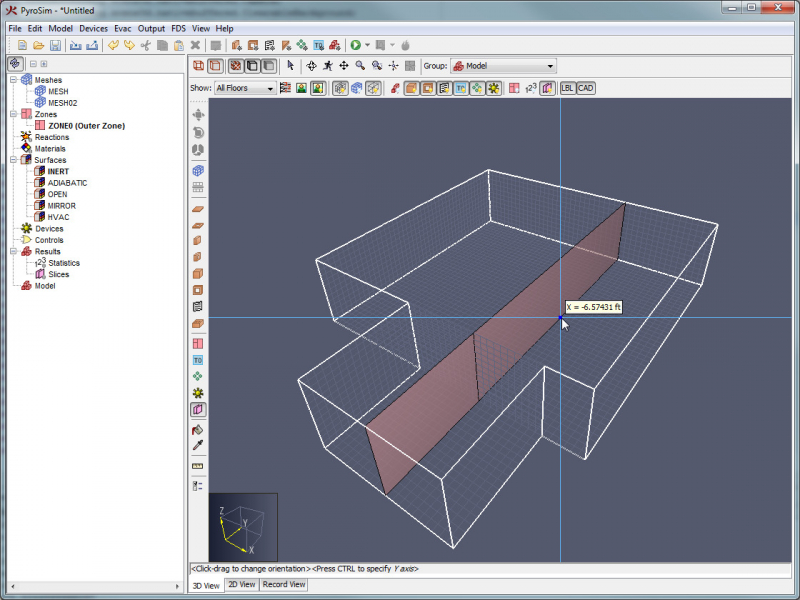
support.thunderheadeng.com 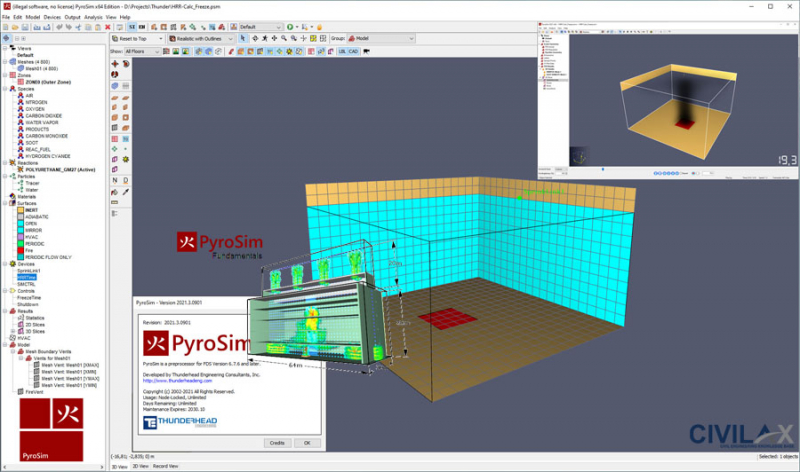
civilax.com -
This course is a must-have for anyone considering a career in private equity. If you are an aspiring Investment Banker, Consultant, or Corporate M&A Professional interested in working for a Private Equity firm, this course is the only way to ensure that you are completely prepared for the Private Equity Interview Process. It focuses on key concepts related to Private Equity and LBO transactions, as well as practicing LBO modeling case studies.
Time is the most valuable resource you have (especially for people in highly demanding and time consuming jobs). This course was created using firsthand experience in Investment Banking and Private Equity, and it is a compilation of the most important materials you'll need to prepare for a Private Equity Case Study interview.
After completing this course, you will have a thorough understanding of key concepts related to private equity and LBO transactions, be able to perform a Return Analysis on Investment (including the Internal Rate of Return (IRR) and Cash on Cash multiple), and be an expert in both paper and full excel LBO modeling (which usually account for more than 40 percent of overall Private Equity interview process). As a result, you'll have the confidence and speed you need to ace your Private Equity Case Study Interview and land a job at the firm of your choice.
Who this course is for:
- Aspiring investment bankers, business development professionals, consultant willing to join the world of Private Equity
Requirements
- Understanding of three financial statements and experience in financial analysis, everything else can be learned in this course.
Course ratings: 4.4/5
Enroll here: https://www.udemy.com/course/private-equity-interview-and-lbo-case-study/

wallstreetprep.com 
kaplangenesis.com -
Have you ever wondered how you could capture and represent knowledge in the most efficient way possible in order to share it with others? Are you curious about how knowledge can be assembled for human interpretation and Artificial Intelligence?
You've probably all been in situations where you wished there was a faster, more effective way of capturing and representing knowledge so that humans and computers could understand it. The tools and techniques for capturing and representing knowledge are referred to as knowledge modeling. A knowledge model is essentially a representation that serves as a foundation for sharing meaning about a topic.
Knowledge modeling has a wide range of applications, including Artificial Intelligence, the Semantic Web, natural language processing, augmented controlled vocabularies and thesauri, reference models for business analysis and engineering, and much more. You'll learn how to model knowledge from a practical standpoint in this course, which means you'll be expected to get your hands dirty as well as gain an understanding of the context of knowledge modeling. As a result, you'll investigate various methods for developing knowledge models. These techniques include both graphical and formal computer-assisted techniques.
Who this course is for:
- Data-oriented professionals with an interest in machine-interpretable methods for knowledge capture and sharing
Individuals who operate in areas like information and knowledge management, business analysis, enterprise architecture, information systems, etc. - Professionals intending to work with Semantic Web-based knowledge graph technologies and graph databases
Requirements
- Diagramming tool for drawing shapes, e.g. Microsoft Office Visio, yEd, Diagrams .net, Lucidchart, UML design tools, etc., or simply pen and paper
- Spreadsheet application, e.g. Microsoft Office Excel or similar
Course ratings: 4.3/5
Enroll here: https://www.udemy.com/course/practical-knowledge-modelling/

cgifurniture.com 
g2.com - Data-oriented professionals with an interest in machine-interpretable methods for knowledge capture and sharing















